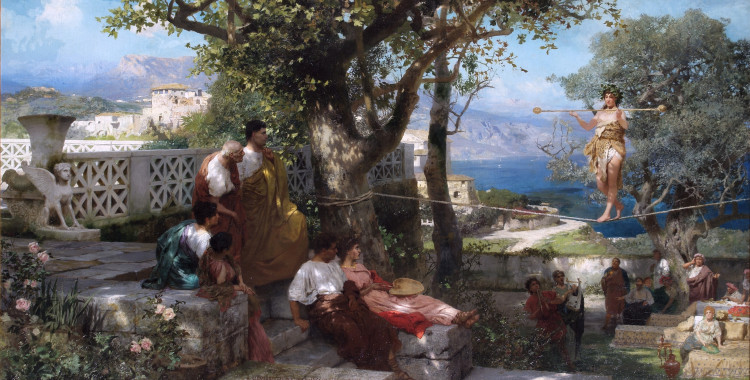One of the major representatives of the late Academic period, Henryk Siemiradski spent a significant portion of his active artistic career in Rome. He is most famous for his monumental paintings based on subjects taken from the 8th century BCE to the 4th century CE, focusing on historical events in ancient Greece and Rome. Like many of his contemporaries, Siemiradski saw the ancient tradition as the source and foundation of European civilization.
The artist’s later period, during which Rope-dancer made, is characterized by plein air scenes far removed from their historical context, idyllic images in which Siemiradski demonstrates most fully his talent for working with color, light and shadow. The “Italian genre,” with its hedonistic mood, was of great interest to artists in the second half of the 19th century and in high demand among the viewing public. Siemiradski was unique in his ability to convey the atmosphere of the serene, sunny Mediterranean, maintaining his lofty sophistication and not lowering himself to crude sensuality and the mundane even when painting banal subjects.
